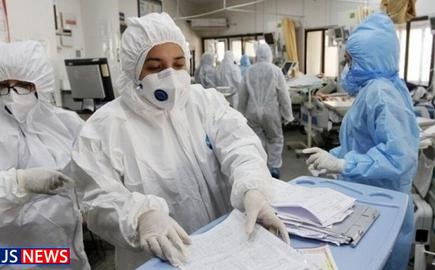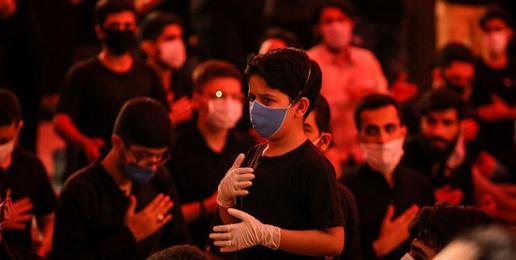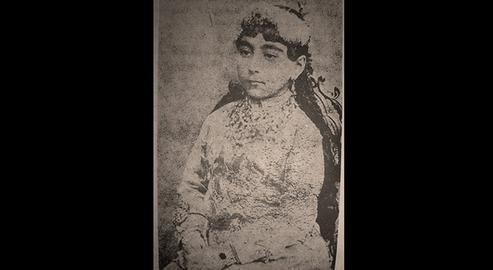Annual mourning ceremonies are set to go ahead in Iran, despite several prominent clerics conceding that such a plan could be dangerous to the public.
Ayatollah Nasser Makarem Shirazi was among those expressing a willingness for this year’s ceremonies marking the martyrdom of Imam Hossein to be held in a different format, although he, along with other powerful clerics and President Rouhani, stressed the importance of making sure they went ahead.
A group of Iranian doctors wrote to religious authorities, Shia eulogists and proselytizers, urging them to save the lives of hundreds of devotees and prevent a "big tragedy” by banning the ceremonies, a move supported by every medical expert working on Iran’s National Coronavirus Taskforce. Taskforce memeber Minoo Moharez said it was simply not enough to follow health guidelines: the ceremonies could not go ahead. “Masks cannot prevent the spread of coronavirus during Muharram ceremonies because people sweat and weep and the masks become wet and a wet mask is useless,” she said, and reminded the public that ceremonies held for Muharram are not ordinary rituals. Social distancing would be impossible.
The doctors appealing to authorities recommended that ceremonies could be held in private homes, and that modern technology could help make this possible and authentic. This idea has received moderate support from Iran's leading ayatollahs and from President Rouhani.
But President Rouhani continued to insist the mourning ceremonies will take place, albeit in smaller gatherings. He reminded the public of the importance of the month of Muharram and said it was not acceptable for Iranian society not to observe it. “In other words, we have to reduce the number of participants but keep the principle,” he said.
"We must follow a moderate path because it is not possible to continue with severe restrictions,” the president told a meeting of the National Coronavirus Taskforce. “We cannot completely shut down economic, educational and cultural activities, even if these activities cannot be the same as before coronavirus. We have no choice but to continue with our activities, but to also follow health protocols completely.”
The National Coronavirus Taskforce stated its guidelines:
— ceremonies must be held in open spaces with the least number of participants possible
— social distancing must be observed
— ceremonies cannot last more than two hours
— processions are not allowed
— no refreshments or food can be served
— drums, cymbals and other instruments cannot be played
— masks must be worn at all times
First Deputy Health Minister Iraj Harirchi expressed frustration over the contradictory messages being sent out, specifically when it came to university entrance exams and religious ceremonies. “We cannot have weddings and travel and do other things but do nothing for Muharram. We must behave moderately. The principle is that any gathering is not right. They pressure us to cancel university entrance exams but then they go traveling in northern Iran.”
Manipulated Figures: An Open Secret
Following on from reports published by BBC Persian that deaths in Iran were three times higher than the official figures suggest, Mohammad Reza Mahboub-Far, a member of the National Coronavirus Taskforce and an epidemiologist, the coronavirus statistics announced by the government have been “doctored” for political and security reasons and the real number of Covid-19 cases and fatalities is 20 times higher than the official figures. He pointed out that there continue to be serious disagreements between members of the taskforce and the government over the figures. The drop in the death toll in recent days was temporary, he said, and had created a false sense of security among government officials and the public.
Doctor Mahboub-Far also revealed that the first coronavirus case in Iran was identified in January, exactly a month before the outbreak was officially acknowledged. At the time, the government covered this up for political and national security reasons and waited until after the parliamentary elections had taken place to announce details of the situation.
According to First Deputy Health Minister Iraj Harirchi, the entire country is in a high state of alert and the daily death toll in Iran has reached a three-digit number. He added that in more than 100 countries, daily coronavirus fatalities were either in single digits or these countries had no fatalities at all.
According to Harirchi, approximately 14 percent of people who have contracted coronavirus have been re-infected with the virus. But Dr. Kamiar Alaei, co-President of the Institute for International Health and Education and a global health policy expert, told IranWire that there has so far been no reliable proof that people can be re-infected with coronavirus.
According to National Coronavirus Taskforce member Dr. Moharez, the coronavirus has mutated, its virulence has increased approximately 10 times and a carrier of the virus can infect many more people now. “Going to restaurants and gyms where mask-less people are next to each other for relatively long periods of time is very dangerous, especially if we take the mutation of coronavirus into account. In such places an asymptomatic carrier of the virus can infect others simply by talking,” she warned.
She said that as of August 8, the number of coronavirus cases was very high in most provinces and especially in Tehran, so much so that most hospitals are struggling to cope with the high number of Covid-19 patients, many of whom were being kept in intensive care units (ICUs) and required ventilators to help them breathe. ICU wards are almost filled to capacity, Moharez said.
Exams: Safe or Dangerous?
On August 7, Deputy Health Minister Alireza Raeesi claimed that the majority of those who have taken exams necessary to study for a Master’s degree confirmed that health protocols had been properly observed. But on August 9, Mohammad Reza Ghalibaf, speaker of the parliament, said there were reports that health guidelines had been seriously breached during the exams and asked for a field investigation. Ahmad Naderi, member of the parliament’s Committee on Education, said that violations included non-compliance with social distancing, congestion during entry and exit and violations of the rules for exam procedures.
The National Testing Organization, however, claimed that 91 percent of those who took the Master’s degree exams were happy with the implementation of health guidelines in testing precincts and that rumors to the contrary were being spread to confuse the public mind and discredit organizations people trusted.
At the same time, persistent demands to postpone nationwide university entrance exams for Bachelor's and other degrees continue. Homayoon Samih Najafabadi, a member of the parliament’s Health Committee, announced that the committee believed the exams should go ahead in accordance with health protocols. He said the second peak of coronavirus is expected to hit the country by October, leading to a higher mortality rate. As a result, it would be more dangerous to hold the exams at that time.
Provinces Round-up
Tehran is in a red, or emergency, state of alert and Anooshirvan Mohseni Bandpey, governor of the province, announced that certain public and social services would be rendered only to recipients wearing masks. People who unnecessarily violate health requirements will be denied services and could face heavy fines or other punishments.
Twenty-six provinces in Iran are in a red or orange (serious) state of alert, reported Dr. Sima Sadat Lari, the health ministry’s spokesperson. She warned that coronavirus would spread further if people from other parts of Iran travel to the provinces of Mazandaran, Gilan, Razavi Khorasan and Golestan.
Mazandaran, a forested province on the shore of the Caspian Sea and a perennial vacation favorite in Iran, is one of these “red” provinces, but this has not stopped numerous vacationers from traveling there, leading to an increase in infections.
According to figures released by Mazandaran University of Medical Sciences, on Saturday, August 8 alone, 253 new Covid-19 patients were hospitalized in the province, driving the total number of current hospitalizations to 1,632. Nevertheless, shopping malls and beaches remained crowded and there were worries that there could be a resurgence of coronavirus in two or three weeks’ time.
In the past five and a half months, more than 10,000 coronavirus patients have been hospitalized in Hormozgan province, 590 of them have died and 306 are now being treated in hospitals, reported Dr. Hossein Farshidi, president of Hormozgan University of Medical Sciences. He said that 90 percent of ICU beds in the province are now occupied and there are 87 coronavirus patients in ICU wards, 33 of them in critical condition.
For the last few weeks, Alborz province has been in a critical situation. According to Hossein Karim, president of Alborz University of Medical Sciences, by August 8, 13,486 residents of the province had been infected with coronavirus and 804 had died. He reported that at the time 526 patients with coronavirus symptoms were hospitalized in the province.
Dr. Sima Sadat Lari, the health ministry’s spokesman, announced that the 15 provinces of Mazandaran, Tehran, Qom, Golestan, North Khorasan, Ardabil, Isfahan, Alborz, Razavi Khorasan, Kerman, Semnan, East Azerbaijan, Markazi, Yazd and Gilan are in a red state of alert and the 11 provinces of Fars, Ilam, Lorestan, Hormozgan, Zanjan, Qazvin, West Azerbaijan, Bushehr, Hamedan, Chaharmahal and Bakhtiari and Kohgiluyeh and Boyer Ahmad are in an orange state.
In her daily briefing, Dr. Sadat Lari also announced the official coronavirus statistics for the last 24 hours:
- New coronavirus cases: 2,020
- New hospitalizations: 961
- Total cases since the outbreak: 326,712
- Total coronavirus tests conducted in Iran: 2,686,498
- Total recovered from coronavirus: 284,371
- New fatalities: 163
- Total death toll since the outbreak: 18,427
This is part of IranWire's coronavirus chronology. Read the full chronology
visit the accountability section
In this section of Iran Wire, you can contact the officials and launch your campaign for various problems




























comments